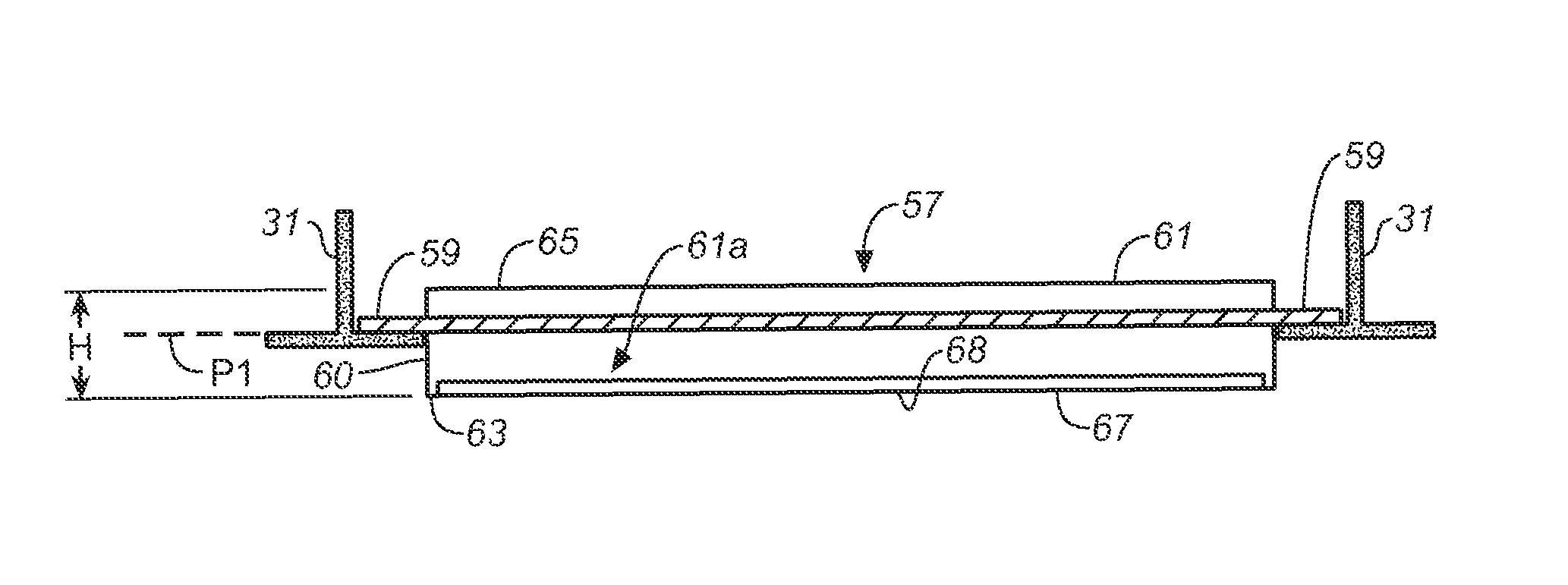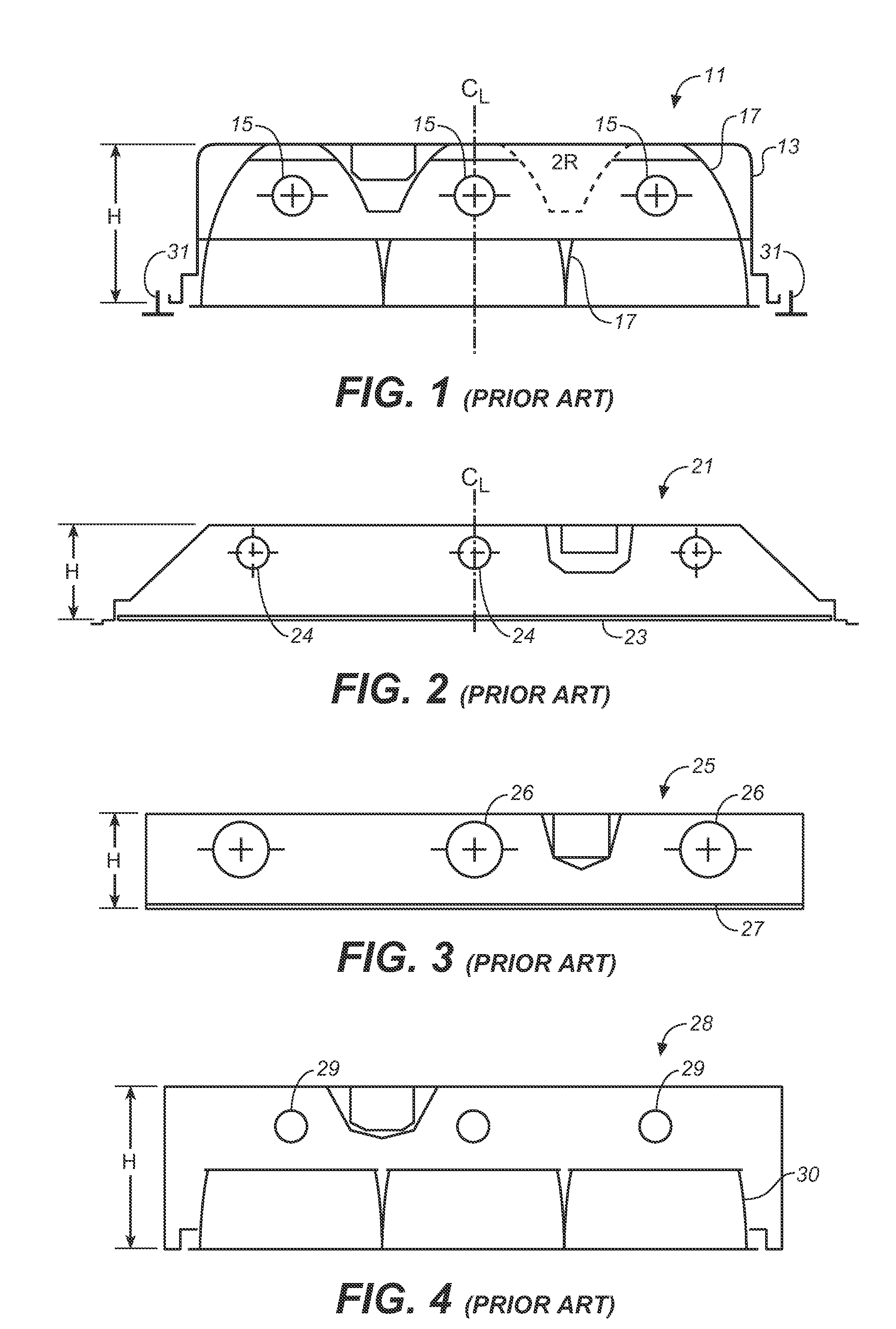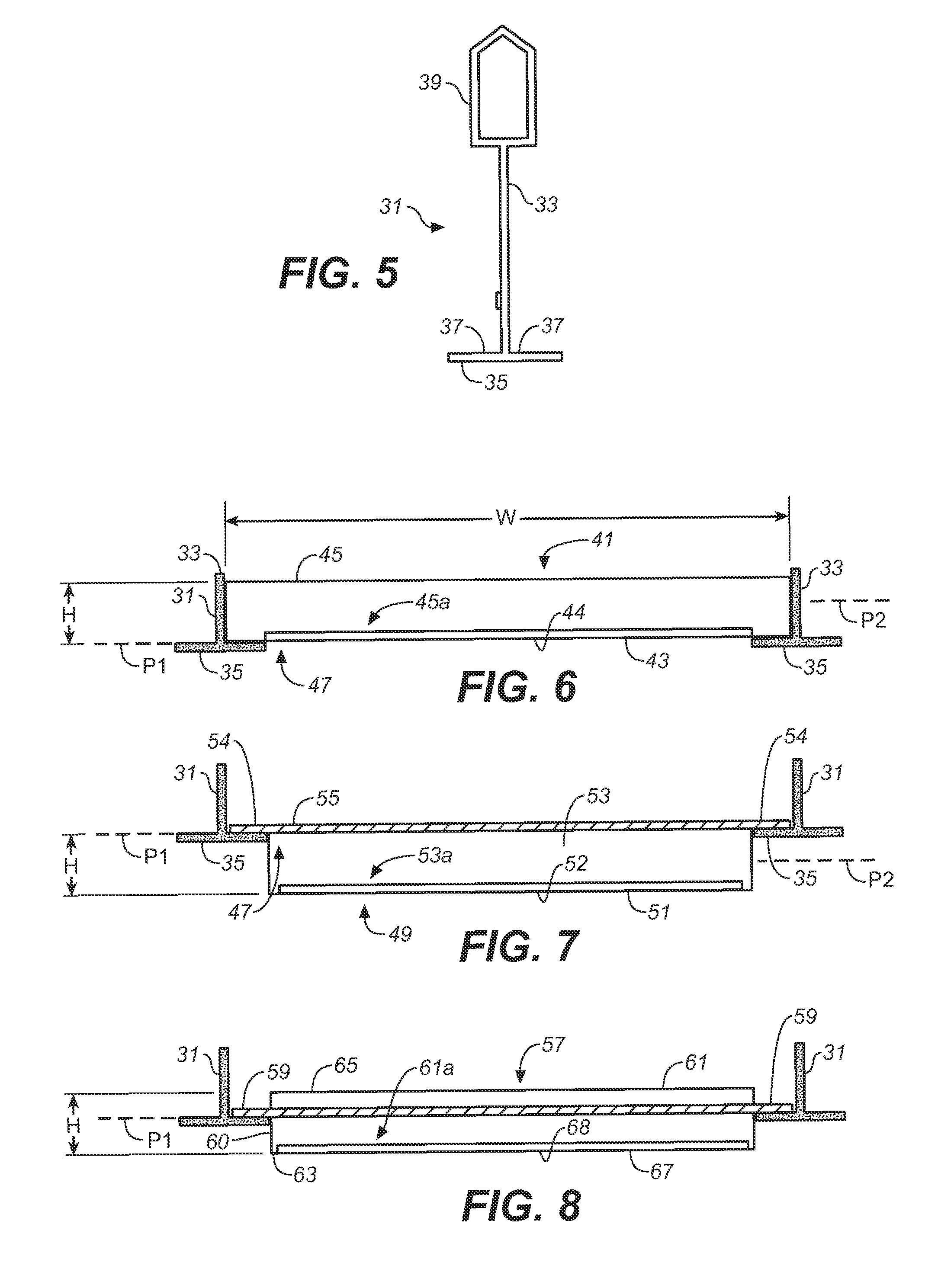Low profile OLED luminaire for grid ceilings
a technology of grid ceilings and luminaires, which is applied in the field of low-profile oled luminaires for grid ceiling systems, can solve the problems of adding to the space requirement, difficult to achieve low-profile luminaire heights, etc., and achieves the effect of low profile, reduced material requirements, and low profil
- Summary
- Abstract
- Description
- Claims
- Application Information
AI Technical Summary
Benefits of technology
Problems solved by technology
Method used
Image
Examples
Embodiment Construction
[0048]It is first noted that the luminaires depicted in the accompanying drawings are not necessarily to scale and appear as having a height (denoted by the letter “H”) relative to their perimeter dimensions that are larger than would be the case in the physical implementation of the luminaire.
[0049]Referring to the drawings, FIGS. 1-4 graphically illustrate different types of conventional luminaires used with grid ceiling systems. FIG. 1 shows a luminaire in the form of a conventional recessed, parabolic troffer 11, which includes a housing 13 having sufficient height H to accommodate the troffer's fluorescent lamps 15 and surrounding parabolic reflectors 17. FIG. 2 shows another conventional recessed troffer used for grid ceiling systems. In this case, the recessed troffer is a lensed troffer 21, having a lens cover 23 which covers the troffer's fluorescent lamps 24. FIGS. 3 and 4 graphically illustrate surface-mounted troffers. FIG. 3 shows a surface-mounted lensed troffer 25 hav...
PUM
 Login to View More
Login to View More Abstract
Description
Claims
Application Information
 Login to View More
Login to View More - R&D
- Intellectual Property
- Life Sciences
- Materials
- Tech Scout
- Unparalleled Data Quality
- Higher Quality Content
- 60% Fewer Hallucinations
Browse by: Latest US Patents, China's latest patents, Technical Efficacy Thesaurus, Application Domain, Technology Topic, Popular Technical Reports.
© 2025 PatSnap. All rights reserved.Legal|Privacy policy|Modern Slavery Act Transparency Statement|Sitemap|About US| Contact US: help@patsnap.com



